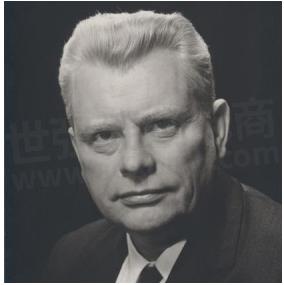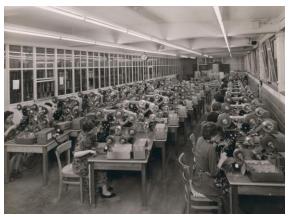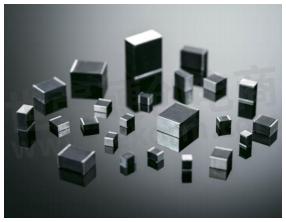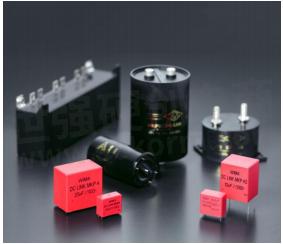The History and Milestones of WIMA

WIMA: History and Milestones
Decades-long company history is a long time. About electronics and its stormy development, this time seems subjectively but significantly shorter. WIMA has set milestones in the field of plastic film capacitors and will continue to make its contribution in the future.
Wilhelm Westermann, the founder and visionary

Wilhelm Westermann
Wilhelm Westermann, born in 1914, was the founder of the Westermann group of companies and founder of the "WIMA" trademark. He is a typical representative of the founding generation, which promoted and shaped the reconstruction after World War II. As a young man in the 30s and 40s of the last century, he was initially a specialist in electronic tubes and radio technology (radar) at the company Telefunken. Immediately after the end of the war, he fed his family by repairing radios. This subject and the lack of available components led to the in-house production of transformers and capacitors.
His vision in 1948 was to specialize in the production of film capacitors and the creation of a related company called WIMA. WIMA, composed of the first syllable of the first name "Wilhelm" and the last syllable of the surname "Westermann", proved to be a particularly well-chosen trademark in the following years.

Early Production
In the decades later, with an evergrowing export share and a global world market today, "WIMA has not only become a well-known and respected trademark in the field of film capacitors, but also, and certainly not entirely unimportant, and internationally memorable (because short) and well-spoken word, which is particularly advantageous for Asian markets, such as Japan and China.
However, Wilhelm Westermann was not only smart in terms of name but also in terms of the development of the direction of his film capacitors. Earlier and clearer than all his other competitors, who were invariably larger or even corporations, he recognized the importance of "miniaturization" not only in the active area, but also the "passive" device film capacitor. Here he was far from passive and became a trendsetter.
Briefly, the milestones are summarized: In the case of the dielectric, the transition from hygroscopic paper to moisture-resistant and thinner polyester film. From the then common film / foil construction to metalized, i.e. self-healing construction. From the axial component configuration to the radial which is better met as "pluggable" capacitors the board technology emerged at the beginning of the 1960s. New housing or wrapping techniques followed and the use of increasingly thinner plastic films made of Polyester, Polypropylene and Polycarbonate. All for one purpose and in one direction: miniaturization! Wilhelm Westermann thus became the world's leading pioneer in the field of miniaturization of film capacitors. In addition to smaller designs, ever-decreasing wire spacings, i.e. grid dimensions or PCM. First pitch of 7.5 mm, then pitch 5 mm and finally 2.5 mm were the milestones. Pitch 5 mm e.g., developed at the beginning of the 1970s, when it was still unpredictable that it was to become the standard grid size of automatic assembly once, namely about 10 years later.
However, he was far-sighted not only in the development of his products but also in setting up his group of companies at four locations in Germany. A company that, despite all the changes in technology, markets, and economic conditions, has successfully maintained its position worldwide. Qualitatively still regarded as number 1 and internationally asserts itself as a mass producer competitively despite or because of this location with a genuine "Made in Germany". A company that has remained family-owned and still independent for 69 years with unchanged ownership. When Wilhelm Westermann died in 1981, he left his successor Dipl. Ing. Dipl. Wirtsch.-Ing. Wolfgang Westermann is a stable company with worldwide recognition in the field of film capacitors.
"Most important products" from WIMA
The "most important product" for WIMA was and is always what secures not only the present, but also the innovative product that is most promising for the future. If the "most important product" is only of the past, then the company that manufactures or has manufactured it would have virtually no future and disappear from the market. Incidentally, all products that represents an article program are equally important. Regardless of their economic importance, they are indispensable as part of the whole. They represent the answer to various technical problems and applications and, as a whole, create a synergy that is what makes the breadth and appeal of an article program.
Nonetheless, what follows is a description of products that could be considered as the right "timely" timepiece - from then to now - as the "most important product" of WIMA and thus represent real milestones.
Through-hole Miniature Capacitors
When smaller and smaller designs and grid dimensions became possible in the course of miniaturization, WIMA 1970 set a decisive course for the future: "Small as never before! For the first time in the grid 5" was the advertising slogan. It was the WIMA FKS 2, a miniaturized film/foil construction with polyester as a dielectric, 100 Volt nominal voltage and capacities up to 0.015 μF. Thus the epoch of the through-hole plastic film capacitor was opened in pitch 5 mm. A few years later, in April 1974, the metalized polyester capacitor MKS 2 was followed by a rated voltage of 63 volts and a peak capacitance of 1 micro Farad; 1 μF in such a small construction firm and in grid 5 represented a world sensation at that time.
This was made possible by a newly a presented polyester film called "Mylar" from Dupont in a previously unknown thickness or thin of 1.5 thousandths of a millimeter, 1.5 microns, or 1.5 µF. To become aware of this dimension, to achieve for example the thickness of a human hair, one has to put 20 layers of this 1.5 microns "Mylar" thinnest foil on top of each other. However, the product was made possible not only by the high-tech performance of the film manufacturer Dupont but also by the high-tech know-how of the medium-sized company WIMA to ensure that these films were safe, i.e. functioning and high-quality capacitors to process. Nothing better demonstrates WIMA's technological innovation and production leadership then the fact that WIMA has been unique in this field for years to all global competition.
Further steps followed, in the form of even thinner 0.9 microns down to 0.5 micron films, from which WIMA was the first to make new products and introduce them to the market due to its leading research and know-how. At the end of the 1970s, even smaller models came onto the market, the "smallest plastic film capacitors in the world", as WIMA propagated: the MKS 02 with a pitch of 2.5 mm, with capacitance values from 3300 pF to 1 μF and nominal voltages from 50 volts to 250 volts.
Thanks to these even thinner foils, the MKS 2 was also extended up to a maximum capacity of 22 μF in the early 1980s.

WIMA Capacitors in PCM 2.5 mm
Only the fact that the film of 0.5 micron required for this was not permanently available commercially reduced the maximum capacity back to 10 μF. This limit was set by the film manufacturer, but not by the technological possibilities of WIMA.
The pitch 5 mm family (as well as the 2.5 mm pitch) was extended by the use of all common capacitor dielectrics, from 1988 also with PPS and made usable for all imaginable applications.
FKS 2, FKP 2, FKC 2, MKS 2, MKP 2, MKC 2, MKI 2, etc. to mention only the associated article names.
When the article family was completely created by WIMA, the era of automatic radial loading began in the early 1980s.
The automatic assembly was not brand new, previously it was already available for axial components to a limited extent. The automatic radial loading was for the major component consumers, in particular, the former color television equipment manufacturers such as Grundig, Telefunken, and Blaupunkt, not just something new in processing technology but a veritable revolution. It gave consumer electronics in the western high-wage countries the opportunity to remain competitive and to hold its own against the Asian competition for a long time even from the cost of manufacturing. And the pitch dimension of 5 mm became the basis of the automatic radial assembly.
Thus, the miniature capacitor in pitch 5 became the standard capacitor of the automatic assembly. A true mass-produced product developed, not only for WIMA but also for others worldwide. In the 80s and 90s, production figures of more than 3 million pitch 5 capacitors per day were no problem for WIMA.
The Far East, SMT, and the progress of digitization subsequently changed markets and demand figures. But until today, the pitch 5 capacitor for WIMA (certainly also for other manufacturers) has remained a mainstay of the business alongside other product groups.
SMD, the unwired miniature capacitors
From the beginning of the 1980s, the next technical challenge arose for all film capacitor manufacturers: the SMT and SMD technology.
A paradox was that a small plastic structure (nothing else is the film capacitor) with a melting point of the material of about 260°C should be taken completely through a solder bath having just this (melting) temperature, and does not take any damage!
Again, for clarity: nothin wires or an intermediate board or circuit board are present here which could serve as protection and thermal resistance as it is with through-hole components; with five sides (because the bottom side of the SMD component is glued to the circuit board), the small capacitor is directly exposed to temperatures in the region of its film material melting point!
The device is said to perform this procedure not only as a device capacitor, i.e. with a measurable capacitance value just to survive but after the soldering process should have the same high-quality values (capacitance, tangent delta, insulation resistance) as it had before processing.
"Impossible, this is only possible with ceramics, and certainly not with foil," said all well-known capacitor manufacturers, even and especially those of film capacitors, with one single exception: WIMA. WIMA did not judge but trusted in its leading know-how. And it went! In 1983 WIMA presented the first functional polyester SMD in a repressed version. Further developments followed, at the end of the nineties, the final versions with plastic cups. Today, WIMA SMD capacitors with PET, PEN, and PPS dielectric films are also fully suitable for the lead-free soldering processes according to RoHS 2011/65/EU.
Size Codes 1812, 2220, 2824, 4030, 5040 and 6054 offer capacitance values from 0.01 μF to 6.8 μF and rated voltages from 63 volts to 1000 volts. This covers almost the entire range of conventionally braided plastic film capacitors. The box technology of the WIMA-SMD has significant advantages over non-encapsulated or over-pressed SMD designs:
Protection of the capacitor element against thermal overloads during the processing process. Even with the use of more temperature-resistant dielectric films, such as PEN and PPS, this results in a greater safety margin in connection with lead-free soldering processes than in purely "bare" versions.
No risk of internal cracks (as with ceramic SMD) due to the construction-related elasticity of the structure.
No risk of delamination due to full-sided metallic SMD connection plates.
Flame retardant plastic enclosure according to UL 94 V-0

WIMA SMD-Capacitors with box encapsulation
The SMD foil capacitor was the "most important product" for WIMA at the time because its existence was the best evidence that even in the age of SMT the film capacitor had not lost touch with technical progress. This has been successful and today the SMD film capacitor is an established, safe SMD component that is appreciated for its advantages. At the same time, it has developed into a major source of revenue, in addition to the miniature and standard capacitors, as well as special capacitors, such as pulse and RFI suppression capacitors.
A new trend, DC-Link film capacitors for power electronics
While the main focus of the film capacitor was on further miniaturization, there has been a new trend for the last 10 years.
Large to very large film capacitors with capacitance values, as they were previously known only from the Elko area, but at the same time also with very high mains voltages. A prime example of this is the WIMA DC Link family, which will be offered by WIMA as of 2007. The WIMA DC-Link MKP 3, MKP 4, MKP 5, MKP 6, HC and HY have capacitance values up to a maximum of 8250 μF and voltage ranges from 450 volts to 1500 volts.
DC-Link capacitors are used in DC link power electronics applications, where they are increasingly replacing the existing electrolytic capacitors due to increasing electrical demand.
They are made of polypropylene film and, at high frequencies, have higher AC load capacity and lower power dissipation/self-heating than comparable electrolytic capacitors. In addition, they are characterized by:
Very high volume capacity
High rated voltage per component
Very low dissipation factor (ESR)
Very high insulation resistance
Excellent self-healing properties
Long life expectancy
Non-polar structure
Particularly safe connection configuration
High vibration and shock resistance
Excellent mechanical stability
Their designs are either cubic or rectangular with two-wire and four-wire connections or cylindrical with wire or screw connections.

WIMA DC-LINK Capacitors
With unimpregnated film capacitors of the highest capacitance values and rated voltages for high powers, a new chapter in film capacitor development is being opened. Due to their future viability, they are among the "most important products" today due to the technical challenge as well as the sales potential.
WIMA's entry into the world of supercars
In 2004, WIMA took the entrepreneurial decision to invest in film capacitors as well as in the topic of supercapacitors or electrochemical double-layer capacitors.
Although these are also capacitors, it was more a cross-entry.
The electrochemical double-layer capacitor had with the traditional WIMA film capacitor very little to do except for the fact that it also had a capacitance value. The principle of, let's call it, "SuperCap" for short, is based on the Helmholtz principle, which builds up a molecular double layer as an angstrom thick dielectric in this formation of carbon-layer electrodes and electrolytes. Capacities up to more than 3000 Farad (!) are possible but at the same time with an extremely low rated voltage of 2.5 to 3 volts.
Just to give an illustrative example, a 100 Farad SuperCap is about the size of a matchbox. To achieve this capacity, the impressive volume of 100 million parallel-connected standard polyester film capacitors with the respective single capacity of 1 μF would be necessary!
So the SuperCap is somewhere between electrolytic capacitor and battery to store its electrical charge storage capacity. A very impressive component.
At that time, WIMA gained new specialists and made considerable investments in production facilities. A whole new topic. In the first half of the 2000‘s great hope for the future market, optimism. A cool feeling to be there. Joint funding projects together with representatives of German top companies to jointly improve the performance of the SuperCap.
From 2010 onset of disillusionment, new producers, especially in Asia, shot up like mushrooms from the ground. The cut-throat competition over the price slowly but surely made cell manufacturing "scorched earth". Then in 2013 came the end for WIMA in terms of cell production. But one thing WIMA had gained in this activity was tremendous experience in the field, which was the production of modules, i.e. capacitor batteries from double-layer capacitors.
From 2013, this competence was further developed and in 2015 the product "WIMA PowerBlock" was newly introduced. These are professional special modules that use the cells of leading manufacturers according to customer requirements. Equipped with intelligent electronics that provide balancing and temperature monitoring, WIMA power block modules can be used by many high-profile industrial applications: motor start in construction, earthmoving and agricultural machinery, trucks, buses, railway technology, ships, driverless transport systems, UPS, wind turbines and much more.
The use of PowerBlock modules as energy storage saves weight, maintenance costs, protects the environment, and increases the efficiency and service life of the associated systems.
In addition to its long tradition as manufacturer of the passive component plastic film capacitor, WIMA is therefore also focusing its attention on continuous technical innovation with the SuperCap module.
Conclusion
With its four locations exclusively in Germany, i.e. in Mannheim (sales), Aurich (production), Unna (production) and Berlin (development, QA, and pilot series production), WIMA continues to be a leader in quality and innovation after 70 years now. The name WIMA has a strong reputation in the industry worldwide. Not necessarily as the cheapest mass producer but as a reputable and reliable supplier of high quality products. In Europe, with its group of companies virtually the only one able to hold its own in this area, all of its former and sometimes larger competitors have either disappeared or become part of international corporations.
WIMA, Made in Germany!
- +1 Like
- Add to Favorites
Recommend
- Revolutionary Exxelia MML™ Ultra-High Energy Density Film Capacitors Show a Reduction in Size and Weight of About 50%
- Kendeil Announced DC Link Power Film Capacitors K36 Type for Demanding Industrial Applications
- Exxelia Film Capacitors Designed for Medical and Railway Applications Now Benefit from Reduced Delivery Times
- Elevating AED Performance With Exxelia Ohmcraft Resistors & Alcon Power Film Capacitors
- What is Fluoroplastic
- Is Schottky Diode Well Sealed with Plastic or Iron?
- Exxelia Revolutionary MML™ Ultra-high Energy Density Film Capacitors
- Analysis on the Application of Film Capacitors in Electromagnetic Heating Equipment
This document is provided by Sekorm Platform for VIP exclusive service. The copyright is owned by Sekorm. Without authorization, any medias, websites or individual are not allowed to reprint. When authorizing the reprint, the link of www.sekorm.com must be indicated.






























































































































































































































































































































































































































































































































































































































































































































































































































































































